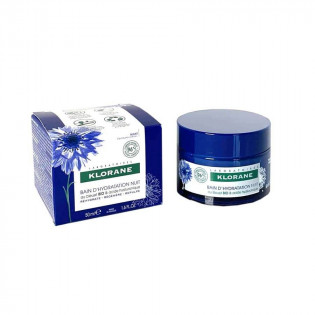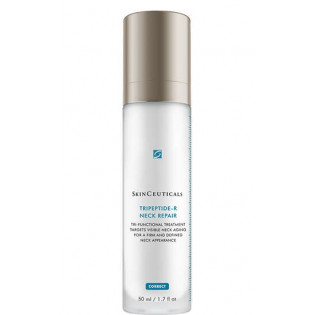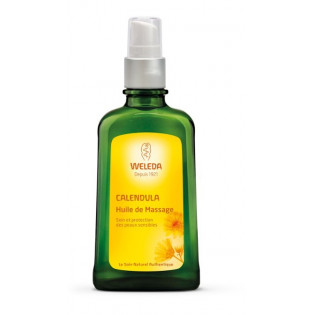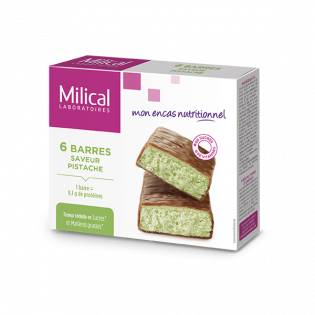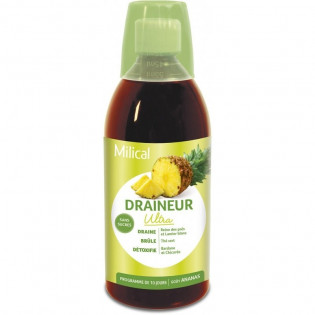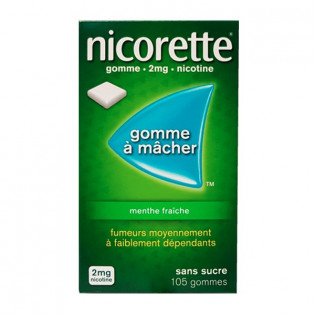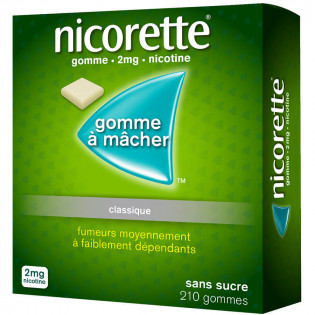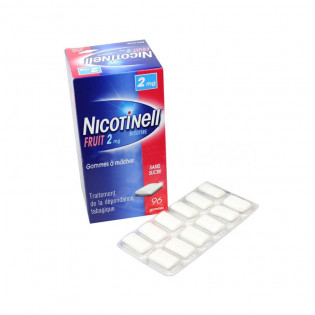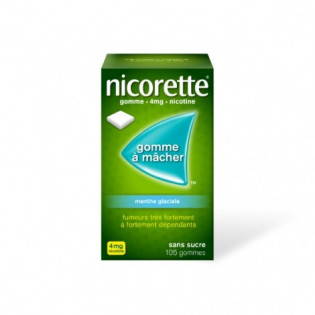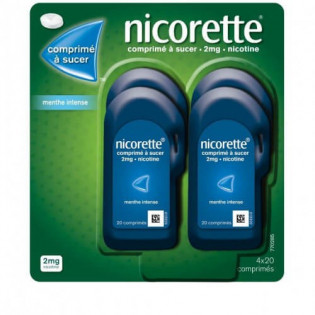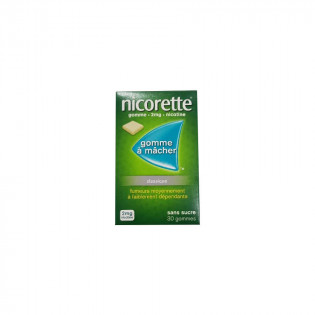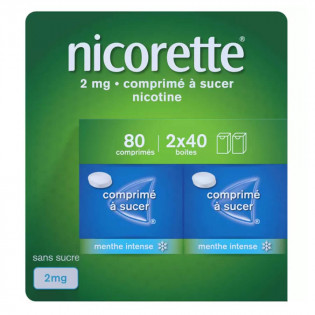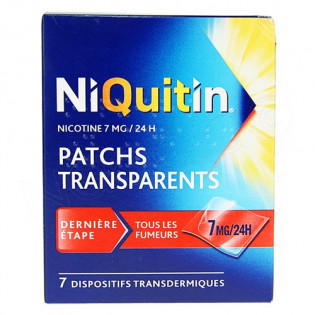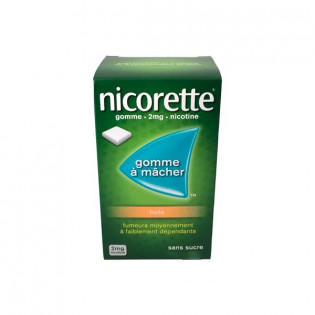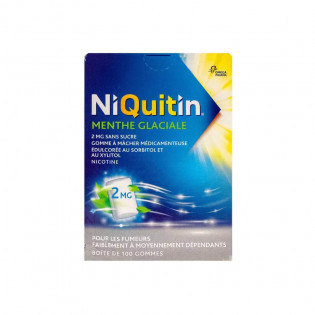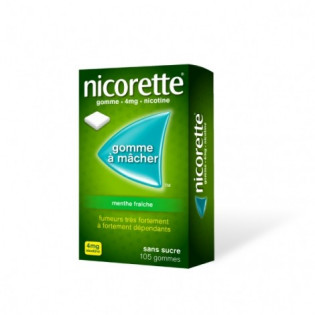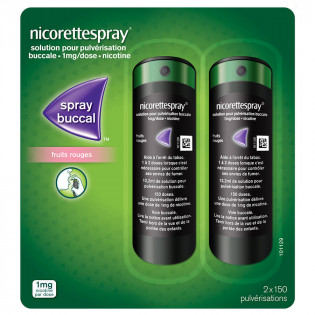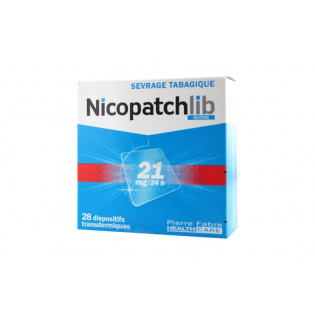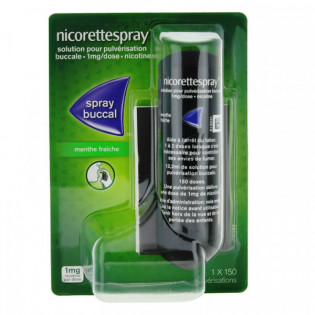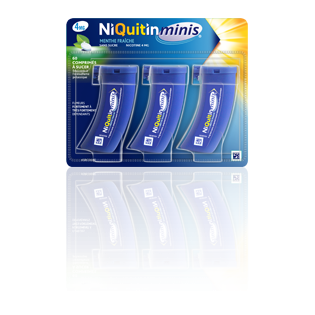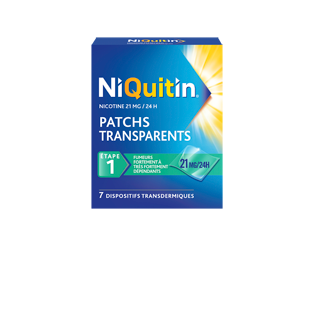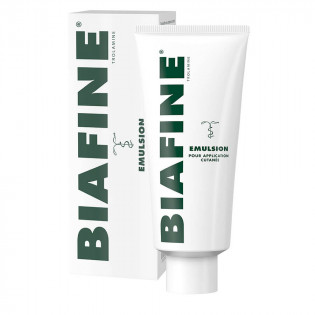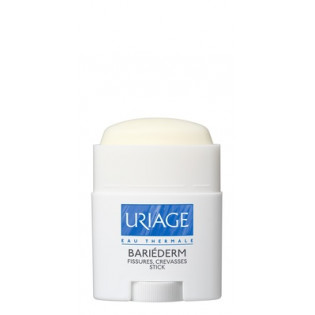In this manual :
1. WHAT IS NICORETTE 2 mg SUGAR-FREE, medicated chewing gum sweetened with sorbitol AND WHAT IS IT USED FOR?
2. WHAT YOU SHOULD KNOW BEFORE TAKING NICORETTE 2 mg SUGAR-FREE, medicated chewing gum sweetened with sorbitol?
3. HOW TO TAKE NICORETTE 2 mg SUGAR-FREE, medicated chewing gum sweetened with sorbitol?
4. WHAT ARE THE POSSIBLE SIDE EFFECTS?
5. HOW TO USE NICORETTE 2 mg SUGAR-FREE, medicated chewing gum sweetened with sorbitol?
6. ADDITIONAL INFORMATION
1. WHAT IS NICORETTE 2 mg SUGAR-FREE, medicated chewing gum sweetened with sorbitol AND WHAT IS IT USED FOR?
Pharmacotherapeutic class
MEDICINES USED IN NICOTINE DEPENDENCE.
This medication is indicated for the treatment of tobacco dependence in order to relieve the symptoms of nicotine withdrawal in subjects who wish to stop smoking.
Although permanent cessation of smoking is preferred, this drug may be used in:
- cases where a smoker is temporarily abstaining from smoking,
- a smoking reduction strategy as a step towards permanent cessation.
2. WHAT YOU SHOULD KNOW BEFORE TAKING NICORETTE 2 mg SUGAR-FREE, medicated chewing gum sweetened with sorbitol
List of information needed before taking the medicine
Not applicable.
Never take NICORETTE 2 mg SUGAR-FREE, medicated chewing gum sweetened with sorbitol:
- if you do not smoke or if you are an occasional smoker,
- if you are allergic to any of the ingredients.
IN CASE OF DOUBT, IT IS ESSENTIAL TO ASK YOUR DOCTOR OR PHARMACIST FOR ADVICE
Precautions for use; special warnings
Take care with NICORETTE 2 mg SUGAR-FREE, medicated chewing gum sweetened with sorbitol:
Warnings
- · Some diseases require medical examination and monitoring before using this medicine. For example, in case of:
o severe liver and/or kidney failure,
o ulcer of the stomach or duodenum in progress,
it is essential to consult your doctor before using this medicine.
- Chewing gum should be kept out of the reach of children.
The therapeutic dose for adults could cause serious or even fatal poisoning in children.
- Due to the presence of sorbitol, this medicine should not be used in cases of fructose intolerance (hereditary metabolic disease).
Precautions for use
- There are signs of underdosing. If you feel, despite the treatment, a sensation of "lack" as in particular:
o urge to smoke,
o irritability, sleep disturbances,
o agitation or impatience,
o difficulty concentrating,
consult your doctor or pharmacist. It may be necessary to change the dosage of the medication.
- Certain signs may indicate an overdose: if signs of overdose appear, i.e:
o nausea, abdominal pain, diarrhea,
o hyper salivation,
o sweating, headache, dizziness, hearing loss,
o general weakness,
it is essential to adapt the treatment with the help of your doctor or pharmacist.
In case of association of NICORETTE 2 mg chewing gums with NICORETTE transdermal device, refer to the leaflet of each of these medicines.
IF IN DOUBT, DO NOT HESITATE TO ASK YOUR DOCTOR OR PHARMACIST FOR ADVICE.
Interactions with other medicines
Taking or using other medicines
Talk to your doctor or pharmacist if you are taking or have recently taken any other medicines, including medicines obtained without a prescription.
Interactions with food and drink
Not applicable.
Interactions with herbal products or alternative therapies
Not applicable.
Use during pregnancy and lactation
Pregnancy and breastfeeding
|
Ask your doctor or pharmacist for advice before taking any medicine.
|
Pregnancy
Stopping smoking during pregnancy is very important for you and your baby.
Treatment with nicotine replacement products during pregnancy requires medical advice and monitoring. You should therefore consult the health professional who is following your pregnancy or your usual doctor or a doctor at a centre specialising in smoking cessation.
Breastfeeding
If you are a heavy smoker and do not plan to quit smoking, you should not breastfeed your child, but use artificial milk.
The use of this medicine should be avoided while breastfeeding.
However, if you wish to stop smoking and breastfeed your child, take the advice of your doctor or a doctor in a centre specialising in smoking cessation.
Not applicable.
Effects on ability to drive or use machines
Not applicable.
List of excipients with a known effect
List of excipients with a known effect: sorbitol.
3. HOW TO TAKE NICORETTE 2 mg SUGAR-FREE, medicated chewing gum sweetened with sorbitol?
Instructions for proper use
Not applicable.
Dosage, Method and/or route(s) of administration, Frequency of administration and Duration of treatment
For adults only (15 years and older).
Dosage
Chewing gums dosed at 2 mg are not suitable for smokers who are strongly or very strongly dependent on nicotine (Fagerström test score of 7 to 10 or smoking more than 20 cigarettes per day: see Health education advice).
Quitting smoking completely
Treatment of nicotine dependence is usually done in 2 phases.
1st phase
Chew gum every time you feel like smoking.
The number of 2 mg chewing gums is usually 8 to 12 gums per day and should never exceed 30 gums per day.
The duration of this phase is approximately 3 months, but may vary depending on individual response.
2nd phase
When the urge to smoke is completely overcome, gradually reduce the number of gums chewed per day.
Treatment should be stopped when consumption is reduced to 1 to 2 gums per day.
It is recommended not to use the gums beyond 12 months.
If during your treatment you continue to experience cravings or if your treatment has failed, CONSULT YOUR DOCTOR.
Your doctor may advise you to combine NICORETTE Chewing Gum with a form that delivers nicotine throughout the day: NICORETTE Transdermal Devices.
Temporary abstinence from smoking
Chew a piece of gum every time you feel like smoking.
The number of 2 mg chewing gums is generally 8 to 12 gums per day and should never exceed 30 gums per day.
Reducing tobacco consumption
If possible, alternate nicotine gum with cigarettes.
Chew gum as soon as the urge to smoke arises in order to reduce cigarette consumption as much as possible and to remain smoke-free as long as possible.
The number of gums to chew per day varies and depends on your needs. However, it should not exceed 30 gums per day.
If a reduction in cigarette consumption has not been achieved after 6 weeks of treatment, it is recommended to seek advice from a health professional.
The reduction of tobacco consumption should lead you gradually to a complete stop of smoking. This cessation should be attempted as soon as possible within 6 months of starting treatment. If beyond 9 months after the start of treatment, the attempt to stop smoking completely has failed, it is recommended that you seek advice from a healthcare professional.
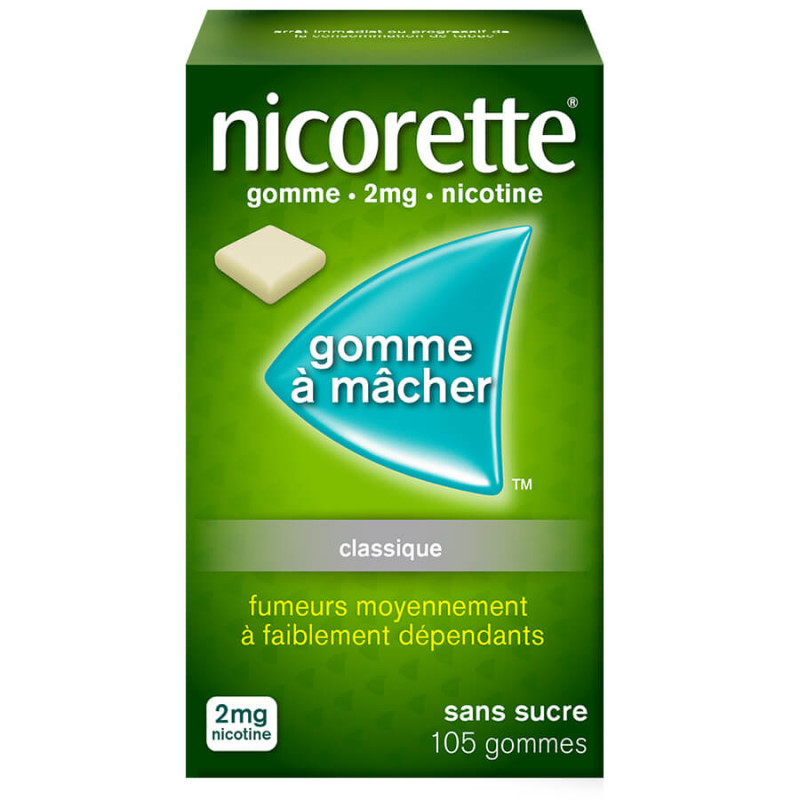
 Français
Français English
English
